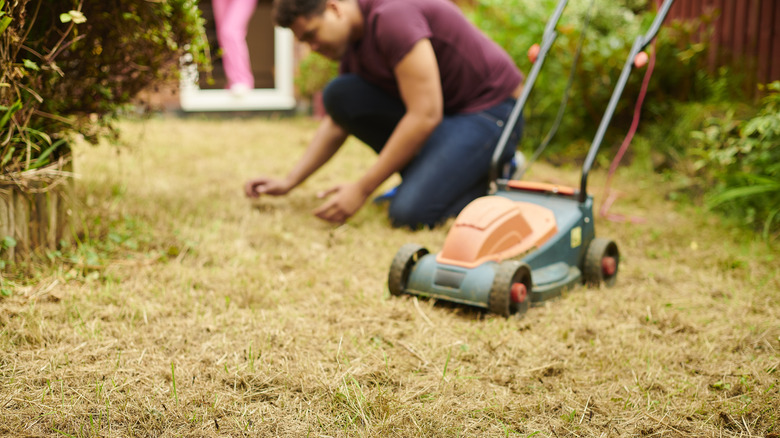Why You Should Think Twice Before Planting Red Fescue Grass Seed
Red fescue (Festuca rubra) is a popular cool-season grass for lawns across the United States, but especially for shadier lawns or cooler climates. This species is quick to establish and can form a dense sod in the right conditions. Once established, it's also one of the more shade-tolerant grass, making it an attractive option for lawns in shady backyards. But, if you're considering seeding your lawn with red fescue, you might want to think again. Like tall fescue grass and other fescue species, there are some important disadvantages to consider before planting it in your yard.
Namely, red fescue is an aggressive grower and many subspecies aren't native to the United States, so it may be invasive in your region. Invasive status aside, it might not be as low maintenance as some sources claim, particularly if you're hoping to have a lush, green lawn all summer long. Before you finalize that bulk order of red fescue grass seed, read on to learn about some of the major disadvantages of this species.
Red fescue might be invasive in your area
The Festuca rubra species is actually made up of several subspecies, some of which are native to North America and some of which are from Asia or Europe. If the label on that grass seed doesn't tell you exactly which subspecies you're getting, you could end up spreading an invasive grass all over your lawn. Of course, many popular turfgrass species in the United States — like Bermuda or zoysiagrass — aren't native.
But, there are good reasons to ditch those popular non-natives in favor of alternatives that are native to your region. The biggest reason is that a non-native like red fescue can out-compete native species, disrupting the local ecosystem. The invasive species can spread beyond your lawn, taking over natural habitat, and decreasing biodiversity. While some wildlife may feed on the grass, it has low nutritional value, so it's not the best meal choice.
Even if ecological impact isn't your top concern, red fescue's invasive status can also mean more maintenance for you. While the grass can spread aggressively, it won't necessarily create the lush, green lawn you're after without your help. In summers, the drought- and heat-sensitive grass is prone to going dormant. So, you may end up using a lot of water to keep it green through summer — and if it gets too hot (above 75 degrees Fahrenheit), even watering might not be enough to prevent it from turning brown and thinning out.
Other disadvantages of red fescue grass
In addition to poor heat and drought tolerance, the cool-season grass also has poor traffic tolerance. If you're planting a turf lawn because you want an area for your kids, pets, or yourself to play, red fescue probably isn't the best choice. This is especially true during hot or dry spells in the summer. If your fescue lawn is already stressed from heat or drought, it'll be even less capable of withstanding foot traffic.
While it's touted as requiring less water compared to other turfgrasses, this may only be true in more northern states where summers are milder. For those in the transition zone, a red fescue lawn will likely need a lot of extra water to keep it from going completely brown. The New Mexico State University's Agricultural Science Center at Farmington gave red fescue an irrigation rating of 9 out of 10. The higher the number, the more water was needed to maintain optimal color and turf density.
For those who like a shorter lawn — or who live in an HOA with strict lawn maintenance requirements — red fescue is also not a great option. This species doesn't like being persistently mowed, especially in the heat of summer. The combined stress of heat and mowing your lawn frequently can result in significant damage to your lawn.


